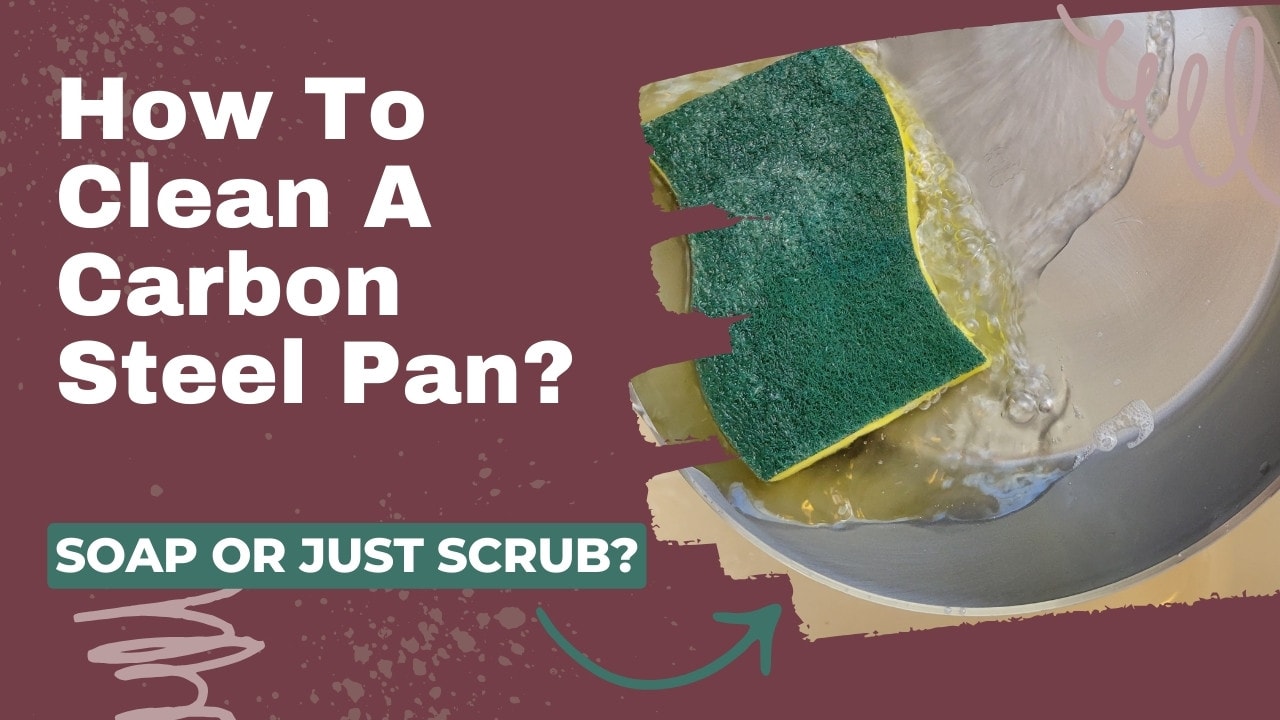I love that feeling you get when you look at a beautiful, clean pan. Especially when it was one of those “oh gawd, that’s going to be hard to get off” situations with burnt-on food.
Carbon steel pans have gotten a bad rap over the years as being hard to clean. But when your pan is seasoned properly, it’s easy and quick to clean. In this how-to guide, we’ll show you step by step how to deal with everything from the well-seasoned pan that needs a quick, easy wipe to the pan with difficult, stuck-on food.
How to Clean a Carbon Steel Pan?
If you have a well-seasoned pan, cleaning it is as easy as grabbing some paper towel and wiping it out. If the pan is newer and hasn’t been cooked with much to build up layers of seasoning, a deeper clean is needed.
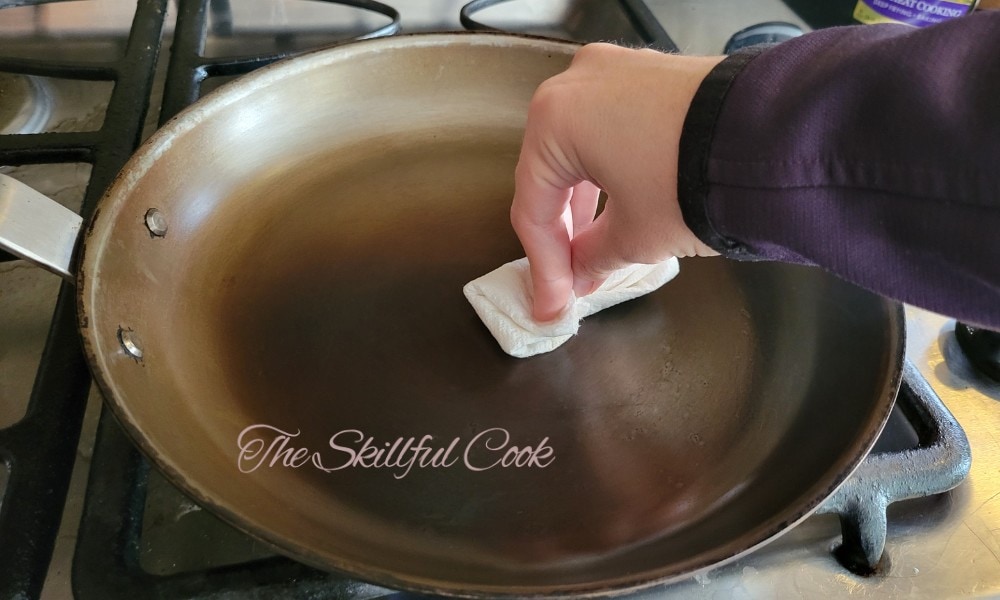
When you need more scrubbing power, don’t turn to dish detergent and steel wool. Instead, sprinkle some coarse salt into the pan and scrub using a paper towel. Salt is coarse enough to remove food grime but also soft enough that it won’t remove or damage the seasoning layer. You can rinse with water and use a dishcloth to scrub, but no soap or harsh scour pad is needed.
How to Clean a Carbon Steel Pan without stripping it – Step-By-Step
Below, you’ll find step-by-step instructions for how to clean a carbon steel pan. We’re going to cover methods for removing residual cooking oil and harder-to-remove food residues (stuck-on, burnt-on) in this section.
What You Will Need
You only need a few things to clean a carbon steel pan, most of which are probably already in the kitchen.
Method 1 – Wipe
This method is all you need for a well-seasoned pan when just a little food residue and some excess oil remain after cooking.
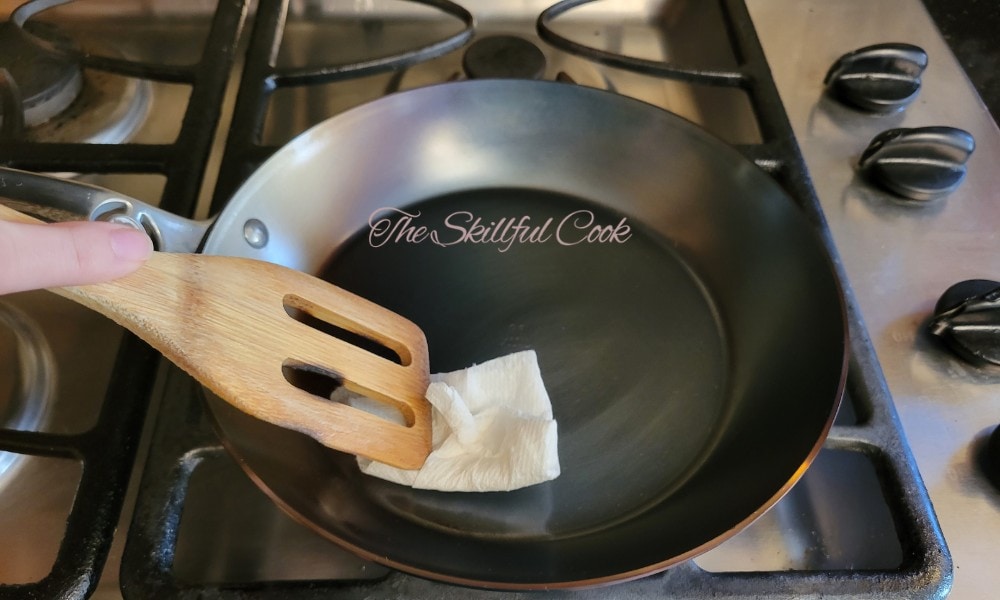
Method 2 – Scrubbing
This method is for when there are some residual food particles stuck to the pan, like after you’ve seared a well-seasoned steak, but it’s not a charred disaster.
Method 3 – Slow Boil for Stubborn Food Residue
This method is needed when a carbon steel pan is not seasoned properly and food is burnt onto the bottom of the pan. (It may feel like this happens a lot when you first start cooking in carbon steel, but as the seasoning builds on your pan and you get a feel for how much heat to use, things will start to improve!)
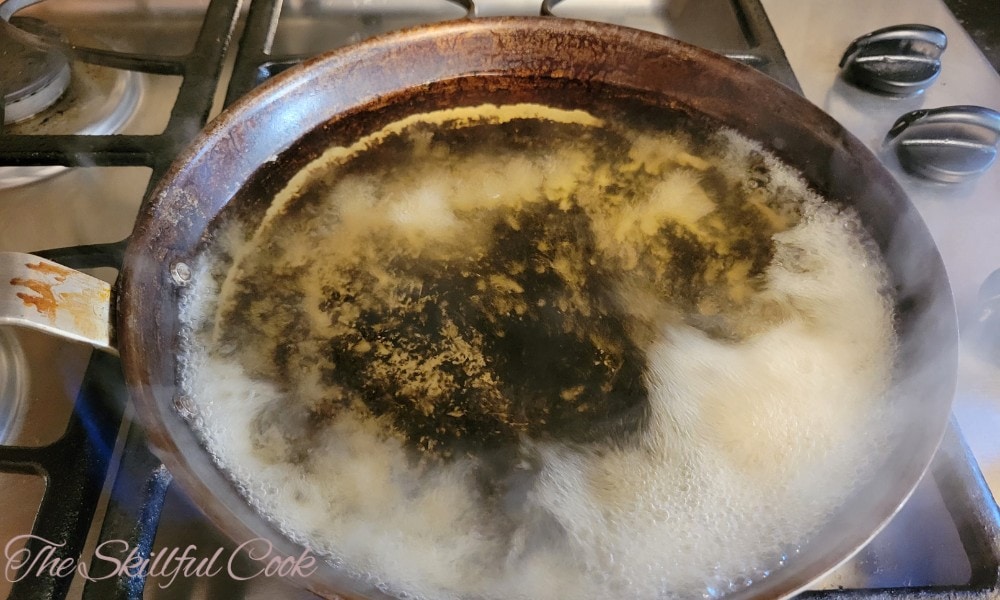
Editor’s Note: In our test kitchen at The Skillful Cook, we have found that carbon steel pans made by top-quality brands like de Buyer and Matfer Bourgeat season and clean much more easily than cheaper brands. If so much food is sticking to your carbon steel pan that you need to scrub it aggressively every time you use it, it may not be a problem with your cooking methods or your seasoning – it might be the grade of steel that your pan is made from.
Can You Use Soap on a Carbon Steel Pan?
To soap or not to soap, that is the question! Luckily, well-seasoned high-quality carbon steel pans don’t need soap and water after every use – because they wipe out so easily. You can use a little dish soap for a more thorough clean on carbon steel, but not a lot. The detergents will may not remove the layers of seasoning, but they may compromise them. So be sure to reseason your pan if you’ve washed with it soap. This is especially true for newer pans with fewer seasoning layers.
Oil-based soaps like Caron-Doucet are gentler on seasoning than detergents. This type of soap can be helpful, actually, by removing the sticky extra oil that hasn’t been baked into the seasoning and isn’t fully polymerized yet. No one wants those residues in their pans!
Can You Wash Carbon Steel Pans in the Dishwasher?
No. Never place carbon steel cookware in a dishwasher. The concentrated soaps and high temperatures strip away the protective seasoning layer of your carbon steel pan and cause it to rust.
Can You Soak Carbon Steel Pans?
No. Soaking carbon steel pans in water is one of the worst things you can do. Water and oxygen are the two ingredients for rust and corrosion. So, soaking is the quickest way for rust to form on a carbon steel pan.
If you have a rusted carbon steel pan, you can still restore it. Read our guide on How to remove rust on carbon steel pans.
How To Clean Burnt Carbon Steel Pans
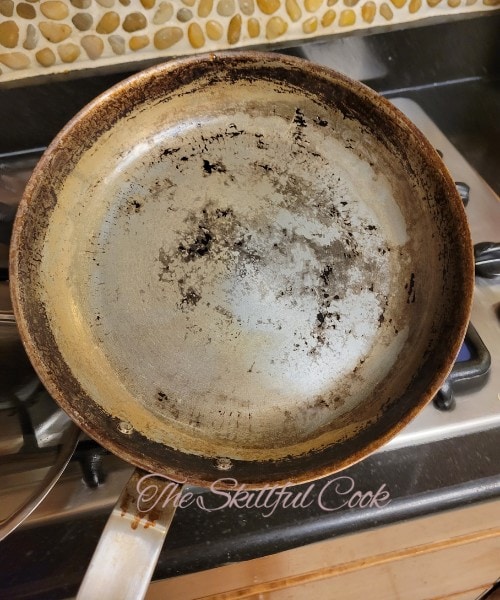
The best way to clean burnt carbon steel pans is the slow boil method listed above. It softens any burnt food residues so they lift free.
If you feel like you need to use soap to get it clean, then you can use a little. It will help clean excess polymerized oils that gum up your pan and are not a part of the seasoning. Then wipe an extremely thin layer of high-smoke point oil onto your pan and burn it off, to add to the seasoning.
Do I Need To Season Every Time?
No, you won’t need to season your carbon steel pan every time you use it. Cooking in your pan (with plenty of oil!) will cause it to gain layers of seasoning naturally. Avoid using sugary or acidic foods in your carbon steel pan, and avoid cooking sticky proteins (like eggs) in it until a thick patina develops.
Seasoning is not to be confused with carbon build-up. Carbon buildup is created when overheated food bonds to the pan. This reduces a pan’s nonstick ability. If your carbon steel pans have black flakey layers or you notice black specks in your food after cooking, then try boiling off the carbon as I described above. If that doesn’t work, you may need to strip your pan with a product like Bar Keeper’s Friend and then re-season it.
Conclusion
Carbon steel pans are easy and quick to clean when they’re seasoned properly. Most of the time, you can just wipe clean with a paper towel.
For deeper cleaning, try an oil-based cleaner like CARON-DOUCET, which is less likely than dish detergent to damage seasoning.
If you have any questions, we’d love to hear from you, so drop us a comment below, and we’ll get back to you as soon as we’ve finished cooking.

